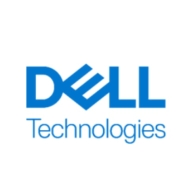

NetApp AltaVault and Dell PowerProtect DP (IDPA) compete in data protection solutions. Dell PowerProtect DP (IDPA) has the upper hand due to its advanced features and superior long-term value.
Features: NetApp AltaVault offers seamless cloud storage, efficient data deduplication, and robust cloud integration. Dell PowerProtect DP (IDPA) provides an all-inclusive data protection suite, easy scalability, and comprehensive recovery solutions.
Room for Improvement: NetApp AltaVault needs to enhance reporting tools, interface intuitiveness, and user experience. Dell PowerProtect DP (IDPA) requires improvements in support responsiveness, initial setup guidance, and customer support mechanisms.
Ease of Deployment and Customer Service: NetApp AltaVault offers streamlined deployment with ample documentation, with customer service receiving mixed reviews. Dell PowerProtect DP (IDPA) provides a more complex deployment but benefits from comprehensive onboarding assistance.
Pricing and ROI: NetApp AltaVault is cost-effective with a quick ROI. Dell PowerProtect DP (IDPA) has a higher initial cost but delivers superior long-term value and comprehensive protection.


The PowerProtect DP series appliances is the integrated appliance solution from the Dell data protection appliances portfolio.
PowerProtect DP series appliance: Simple, efficient and agile data protection
The DP series is an all-in-one backup appliance that reduces the complexity of managing multiple data silos, point solutions and vendor relationships. The DP series simplifies deployment and management—while delivering powerful, enterprise-grade data protection capabilities for small, mid-size and enterprise organizations at a low cost-to-protect.
It is an integrated solution that offers complete backup, replication, recovery, deduplication, instant access and restore, search & analytics, seamless VMware integration — plus, cloud readiness with disaster recovery (DR) and long-term retention (LTR) to the cloud — all in a single appliance.
With the DP series, customers reduce their time-to-protect and become more agile with a solution that’s fast, protected more efficiently, can be recovered quickly and is reliable.
Simple to deploy, scale and manage
The DP series enables organizations to protect a broad ecosystem of applications quickly with a single system management console, consolidating workload protection, and eliminating infrastructure or data sprawl. The easy-to-use System Manager simplifies backups and automates daily tasks, including monitoring, management, reporting, analytics and search. The DP series delivers all-in-one data protection: protection storage and software, search and advanced monitoring and analytics, combined with cloud extensibility. It offers integration with VMware, SQL and Oracle management tools so that admins can use familiar UIs.
Powerful cloud, performance and efficiency
The DP series can scale to fit the needs of enterprises with the ability to protect up to 195 PB (logical) of data to the public, private or hybrid clouds with Cloud Tier, with no additional hardware.7 Plus, native Cloud DR with end-to-end orchestration allows enterprises to copy backed-up VMs from on-premises DP series environments to the public cloud with AWS, Azure, or VMware Cloud on AWS —3 clicks to failover and 2 clicks to failback.
The DP series provides support for modern applications like MongoDB and MySQL and is optimized for VMware. It provides fast, single-step recovery of individual files, dynamic policies for VMs as well as complete VMware images, which can be instantly accessed and migrated live from the DP series appliance back to the production environment (using vMotion) while still running, further simplifying and optimizing VM recovery. Plus, instantly access up to 64 VMs with up to 60,000 IOPS to meet the strictest SLAs.
Data protection search simplifies file-level-recovery (FLR) activities with an easy-to-use search interface. The DP series is also built on the industry-proven Data Invulnerability Architecture (DIA), for encryption, fault detection, and healing.
NetApp AltaVault is a cloud-integrated storage solution created to increase recovery capabilities and lower cost and risks. It is better than traditional backup and recovery solutions because they are considerably slower, more expensive, risky, and can be too complex for the comprehension of many users. NetApp AltaVault solves issues related to backup, archival, and restoration. Compared to on-premises solutions, this software claims to be up to 90% less expensive while solving multiple issues related to data storage in the cloud. AltaVault presents three solutions to its customers: backup and recovery, cold storage and archives, and disaster recovery.
1. NetApp’s backup and recovery solution works with Kerne-Based Virtual Machine, Microsoft Hyper-V, and VMware vSphere, creating a solution for mid-sized businesses as well as for bigger companies that want to protect their offices in different locations. The usable local cache capacities of this solution range from 32TB to 383TB, providing clients with enough storage for their important data while giving them the option to retrieve it if something goes amiss.
2. NetApp AltaVault can be configured in cold storage mode and used for data that is not often used. The solution is scalable, thus allowing minimal costs for operating with cold data and allowing fast access to it at the same time.
3. AltaVault offers disaster recovery for Amazon Web Services (AWS) and Microsoft Azure. Your data will be secured on the cloud, providing you with a secure backup if the need for disaster recovery arises.
NetApp AltaVault’s many valued features include:
The benefits of using NetApp AltaVault include:
A Pre-sales Manager at a computer software company says NetApp AltaVault has fair pricing with a good GUI and a straightforward setup.
We monitor all Backup and Recovery reviews to prevent fraudulent reviews and keep review quality high. We do not post reviews by company employees or direct competitors. We validate each review for authenticity via cross-reference with LinkedIn, and personal follow-up with the reviewer when necessary.